Shopify POS vs WooPOS: Which Should You Use for Your Retail Business?
This head-to-head comparison between Shopify POS vs WooPOS will walk you through the key differences between these two notable POS solutions.
Shopify POS vs WooPOS: Quick Comparison
Both Shopify POS and WooPOS are designed to help businesses manage their retail and e-commerce operations more efficiently. They both serve as centralized systems to streamline sales, inventory management, and customer relations.
Shopify POS and WooPOS are also cloud-based systems, which means they store data and run applications on remote servers. This makes it easier for businesses to access their data from anywhere and manage multiple stores and channels.
However, the key difference between Shopify POS vs WooPOS lies in its ecosystem.
Shopify POS is an integral part of the Shopify ecosystem, which offers an end-to-end solution for businesses to set up their online stores and manage retail operations.
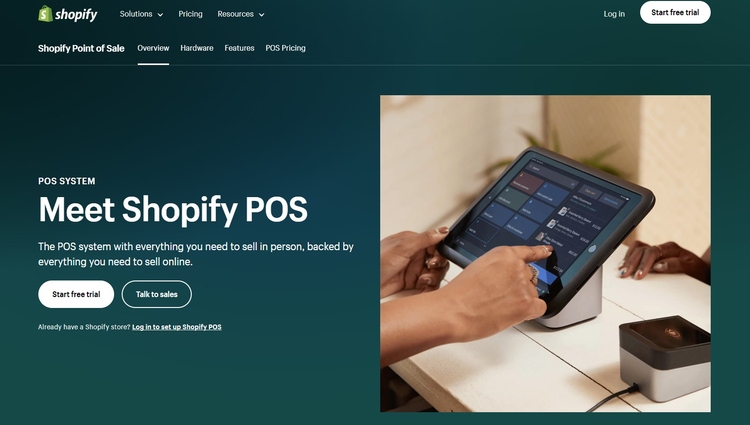
In contrast, WooPOS is supposedly associated with WooCommerce, which is built on top of the widely-used WordPress platform. However, it is a completely standalone app. This means that while Shopify POS offers a more cohesive experience, WooPOS allows for greater flexibility and customization with the ability to integrate with any retail business, either on Shopify or WooCommerce.

Shopify POS vs WooPOS: Pros and cons
Here is the table analyzing the pros and cons of Shopify POS and WooPOS. Our table is based on our careful research and customer feedback on these two POS solutions.
| Shopify POS | WooPOS | |
|---|---|---|
| Pros |
|
|
| Cons |
|
|
Shopify POS vs WooPOS: In-depth comparison
Pricing
Shopify POS
When it comes to pricing, Shopify POS keeps things simple. Shopify POS Lite is included in all three main Shopify pricing plans. This means you just need to subscribe to one of these plans, you can use Shopify POS Lite for FREE.
- Basic Plan: $39 per month
- Shopify Plan: $105 per month
- Advanced Plan: $399 per month
For new Shopify users, Shopify offers a FREE 3-day trial plus the first three months for only $1! You can click here to claim this deal and start selling.
As a free version, Shopify POS Lite doesn’t offer many features. With it, you can only use:
- Mobile POS
- Order and product management
- Customer profiles
If your business is bustling with customers, you’ve got a bunch of staff, or a huge inventory, and needs good reporting and analytics tools, go for the Shopify POS Pro to get even more features.
With the Pro version, you can enjoy:
- All Shopify POS Lite features
- Scalability up to 1,000 locations
- Unlimited store staff
- Smart stock management
- Omnichannel selling features
- Unlimited registers
- Staff roles and permissions
- In-store analytics
Note that if you are already on the Shopify Plus plan, you won’t have to pay extra to use Shopify POS Pro as it is packaged in this pricing plan.

WooPOS
WooPOS has three pricing plans to choose from: Growth, Enterprise, and Device and honestly speaking, they all are very EXPENSIVE. Unlike Shopify POS, there is no free plan available for WooPOS. However, WooPOS lets you use all of its POS features and experience unlimited computers, stores, transactions, products, and customers, even if you use its cheapest plan. The only thing that makes these plans different is the number of users/devices used, and of course, the cost for each plan.
- Growth Plan: $179 USD/month, perfect for up to 5 users
- Add extra users for $35.8 each
- Limited to five computers
- Enterprise Plan: $289 USD/month, built for 10 users
- Add extra users for $28.9 each
- Device Plan: $99 USD/month, works per device
- Costs $99 per computer
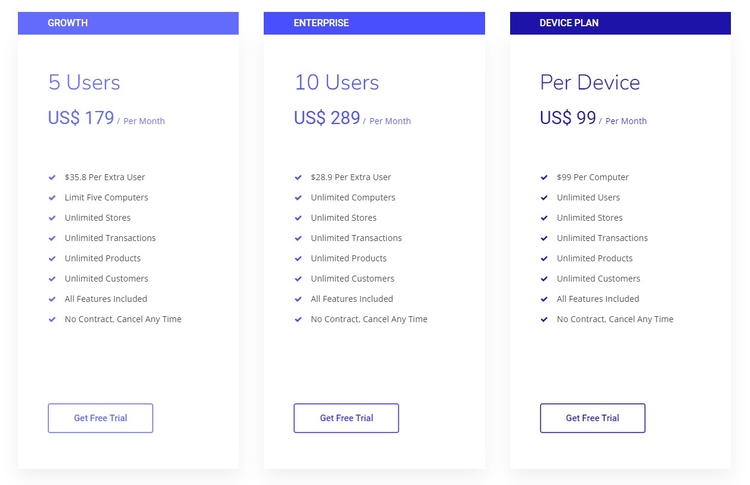
WooPOS doesn’t have any sneaky fees, but you might need to pay extra for optional training, data migration, or custom software development. If your business is massive (say 500,000+ products, 3,000+ transactions per day, or 20+ stores), you might need additional database licenses.
As we can see, the key aspect that heavily influences the cost of WooPOS is the number of registers. While its cheapest plan costs $179, which doubles Shopify POS’s upfront cost, it limits to only 5 registers. Shopify, on the other hand, is not only cheaper, but also offers “unlimited registers”.
That means:
- Shopify POS is the most economical option for you if you have multiple registers and a moderate budget.
- WooPOS is for you if you have a limited number of users/devices and have a more generous budget.
The Verdict:
Shopify POS is the winner because it provides a cheaper point of sale solution.
Ease of use
Shopify POS
If you’re all about keeping things simple and stress-free, Shopify POS is like a breath of fresh air. It’s designed to be super user-friendly, with a clean and intuitive interface. Shopify POS also has its own apps available on both iOS and Android, making it easier to approach anytime, anywhere. All you have to do is just download the app and you’re good to go. Plus, if you’re already using Shopify for your online store, you’ll feel right at home since everything syncs and works seamlessly together.

WooPOS
As WooPOS is packed with pretty many features and functionalities, it can be a bit more complex to use. Not just that, but its interface is pretty old-fashioned and not clean, which can be challenging for modern businesses.
However, it’s fair to say that while it might take a little more time to get used to all the bells and whistles, the learning curve is worth it if you’re looking for a powerful point of solution that can handle more advanced inventory management and reporting.
WooPOS doesn’t have its own iOS and Android apps, so it can be a bit inconvenient for businesses that need to access the software on the go.

The Verdict:
Shopify POS is the winner because it is easier to use.
Key POS Features
Inventory Management
Shopify POS
Shopify POS offers a range of inventory management features that can help users manage inventory levels and make informed decisions about their product offerings and purchase orders, which allows users to create purchase orders for vendors and suppliers.
- Demand forecasting
- Low stock reports
- Sale item suggestions
- Detailed inventory report, inventory counts and receiving
- Stock adjustments
These functionalities provide users with valuable insights into their inventory levels and performance.
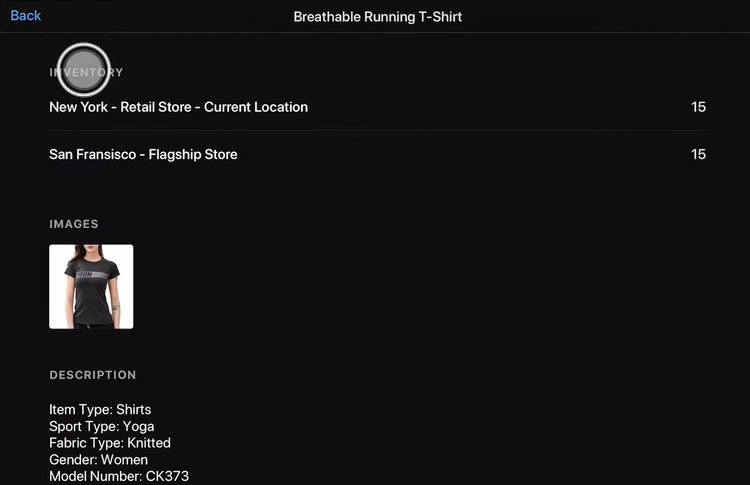
WooPOS
On the other hand, WooPOS offers a wide range of stock management features that can help users track and maintain their inventory levels across multiple stores and sales channels.
- Unlimited products
- Customization capabilities
- Inventory transfers and adjustments
- Custom barcode designer
- Physical WooCommerce inventory count
- Powerful reporting features
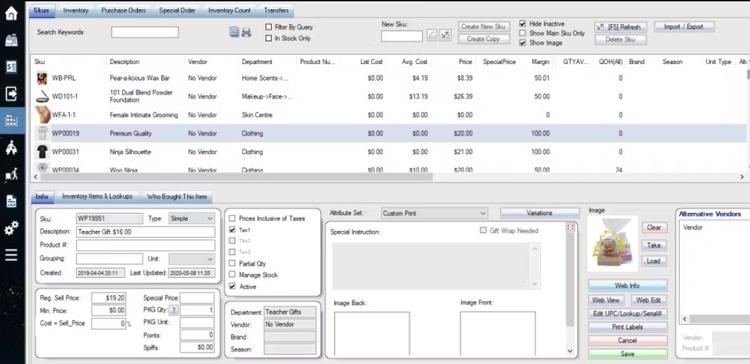
Employee management
Shopify POS
Shopify POS offers a number of features designed for employee management and performance tracking.
- With Manager approvals, you can specify when your staff would need manager approval for actions like applying discounts or editing taxes.
- You can add and manage unlimited point of sale staff and assign custom roles and permissions to your staff to ensure that they have the correct access levels.
- Shopify POS also allows you to attribute sales to staff members for commissions or kudos. This is a great way to incentivize your staff and reward top performers.
- You can give staff members unique pins to log into the POS, which helps to keep your system secure.
WooPOS
WooPOS, on the other hand, offers a range of reporting and analytics features designed to help you monitor your business and manage your staff.
- Give different employees/roles different levels of access and track logins, attempts, and major activities with Permission Control. This can help to deter internal theft practices and mishandling.
- Test and train your staff through a fully functional training mode. This is a great way to ensure that your staff is familiar with the system and can use it effectively.
- Track commission sales for your reps and ensure that your top people get compensated correctly. This is a great way to reward your top performers and incentivize your team.
- Manage your growing team efficiently, allowing you to manage your store effortlessly. With features like Time Clocks and the ability to print reports for payroll preparation, you can ensure that your staff is paid accurately and on time.
Customers
Shopify POS
Shopify POS offers a number of features to help you build rich customer profiles.
Whenever a customer makes a purchase in-store or online, a profile is automatically created. These profiles include contact information, purchase history, lifetime spend, notes, shipping address, taxes, and marketing preferences. You can also use tags to sort your customers and filter them based on the needs of your outreach.
Shopify POS also allows you to contact your customers via email, SMS, or phone, making it easy to reward loyalty and keep them in the loop about upcoming sales or new products.

WooPOS
WooPOS, on the other hand, takes a slightly different approach. It offers comprehensive sales management features, allowing you to track all customer transaction data for historical analysis and future trend predictions.
You can analyze customer demographics across all your online stores and identify top customers. WooPOS also provides customer service support by giving you access to detailed customer purchase history, which enables you to provide better, more personalized service to your customers.
Additionally, you can create targeted email or mail out lists to gauge the effectiveness of your marketing campaigns by tracking the source of your customers and their spending habits.
Reporting and analytics
Shopify POS
Shopify POS offers a range of features that provide users with detailed insights into their sales, products, staff performance, and more. Daily sales reports give users a comprehensive overview of their sales, both in-person and online.
Users can also view and analyze sales by staff members, location, time period, or customers, which can help them take suitable action for maximum efficiency.
Cash tracking, cash flow reports, product reports, discount reports, inventory reports, and finances reports provide users with valuable insights into various aspects of their business to make the most informed decisions to enhance customer retention and, thus, customer loyalty.
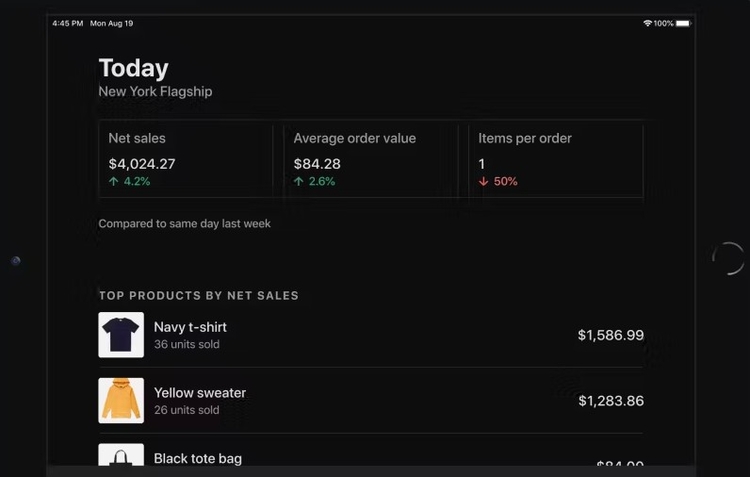
WooPOS
On the other hand, WooPOS offers a wide range of reporting and analytics features that can help users manage their retail business more effectively.
- Favorite reports allow users to quickly access their most frequently used reports. WooPOS also offers over 30 sales reports, including best sellers, worst sellers, gross, restocking, and more.
- MSA MULTICAT reporting can be particularly useful for businesses that sell tobacco, candy, drinks, and groceries.
- Query reports, employee reports, custom reports, inventory reports, customer reports, vendor reports, and export and email capabilities.
Hardware compatibility
Both Shopify POS and WooPOS are compatible with a range of devices, such as:
- Card readers
- Cash drawers
- Barcode scanners
- Barcode printers
- Receipt printers
They both have their own requirements for what kinds of devices are compatible with their point of sale systems.
However, Shopify POS has a wider range of supported hardware. It also provides its own devices (labeled “Shopify”) while also allowing you to use third-party devices that meet their requirements.
Meanwhile, WooPOS doesn’t have its own devices. Rather, it lets you freely connect with a third-party device as long as the device is compatible with its system.
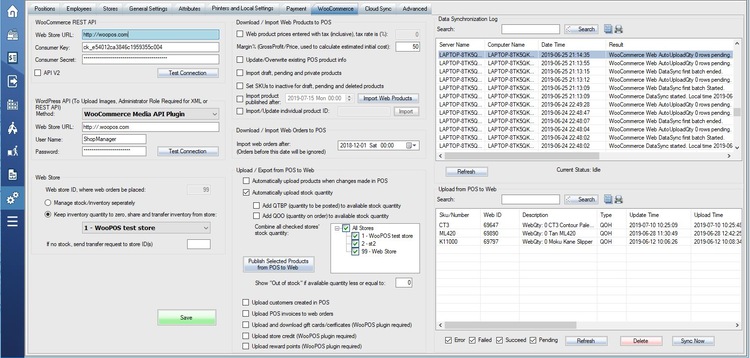
The Verdict:
WooPOS is the winner due to its more advanced and customizable features.
Integrations
Shopify POS
Whether you need to connect your accounting software, email marketing tools, or even your favorite loyalty program, Shopify POS has got your back. They’ve built a whole ecosystem of apps, making it super easy to customize and expand your business tools.
WooPOS
WooPOS is no slouch when it comes to integrations, either. Its claim to fame is its tight connection with WooCommerce, one of the most popular ecommerce plugins for WordPress. So if you’re running your online store on WooCommerce, you’ll be off to a great start. However, the integrations could be a little technical.
The verdict
Shopify POS is the winner due to a larger ecosystem of apps and integrations.
Platforms supported
Both POS systems are cloud-based retail management solutions that sync data in the cloud, meaning they cater to multi-channel and multi-location retailers. However, there are some differences in the types of platforms each supports.
Shopify POS
You’re gonna love Shopify POS as a flexible platform when it comes to supported platforms. No matter what device you’re using, they’ve got you covered. Here’s what they offer:
- Web-based platform
- iPhone app
- Android app
WooPOS
With WooPOS, you’re in good hands if you’re a Windows user. They’ve got support for:
- Windows desktop/laptop
- Web-based platform
WooPOS works with any hardware that’s compatible with Windows, so if you’re using a non-Windows device, give their live demo a try to see if it’s gonna work for you.
As we check out Google Play (Google App Store), we do see there is a WooPOS app available. However, it’s not available to download and install, and the last time this app was updated was in 2020, a very long time ago.
The verdict
Shopify POS is the winner because it gives you more options to integrate its software with your devices.
Customer support
Shopify POS
Shopify POS has got you covered when it comes to getting help. You can reach out to their friendly support team through:
- Email (for those times when you need to spill all the details)
- Phone (when you need to chat it out with a real human)
- Live Support (for instant help when you’re in a pinch)
Their support team is always ready to jump in and tackle any issues you might be facing, so you can get back to running your business in no time.
WooPOS
WooPOS also offers a solid lineup of customer support options, including:
- Email (for all your questions, concerns, and virtual high-fives)
- Phone (because sometimes, you just need to hear a reassuring voice)
- Training (to get you up to speed and making the most of your POS system)
- Tickets (submit your issue, and their team will swoop in to save the day)
With WooPOS, you’ve got a great support network to help you navigate any bumps in the road.
The verdict
Shopify POS wins in this aspect because it is better known for customer service.
Shopify POS vs WooPOS: Overall Winner
Based on various criteria listed, it seems that Shopify is the clear winner. Not only is it more affordable, but it’s also incredibly user-friendly, making it easy for anyone to set up and use. In terms of key POS features, Shopify POS excels in inventory management, customer management, and reporting and analytics. It also has a vast selection of integrations and supports multiple platforms. Customer support is top-notch, with 24/7 availability, and customer satisfaction is consistently high. While WooPOS has some great features, Shopify POS seems to have the edge in almost every category.
Conclusion
That’s how Shopify POS stacks up against WooPOS. Choosing between Shopify POS vs WooPOS depends on the unique needs of your business. So, if you’re looking for an affordable and easy-to-use POS system, we highly recommend Shopify POS. But if your complex system requires more advanced functionalities, you can go for WooPOS.





